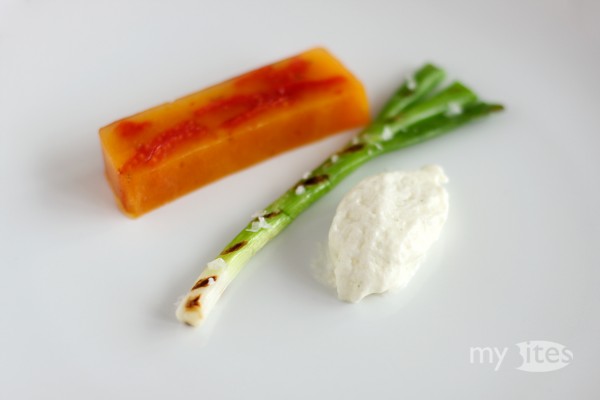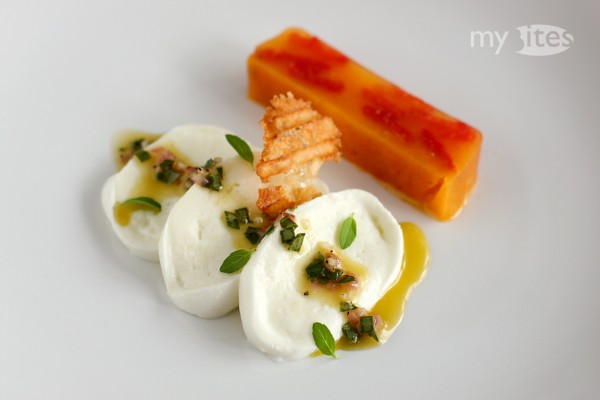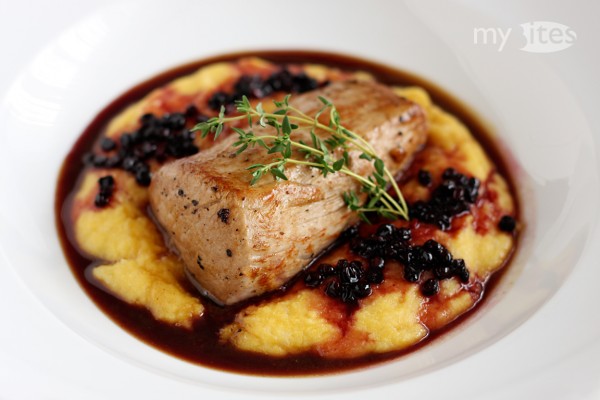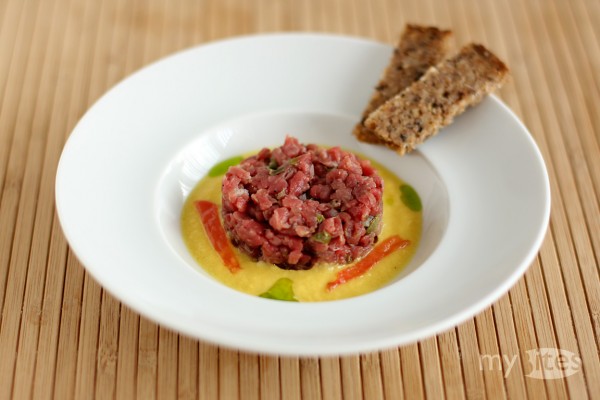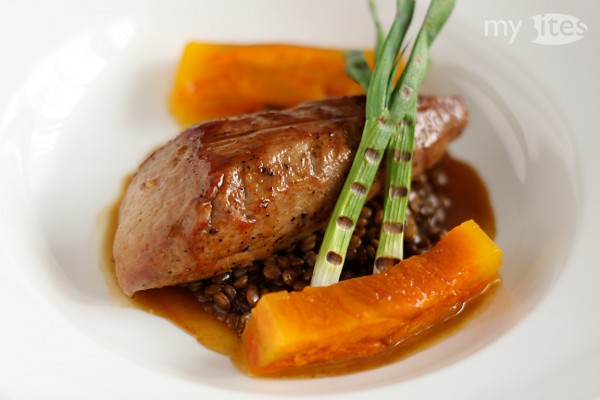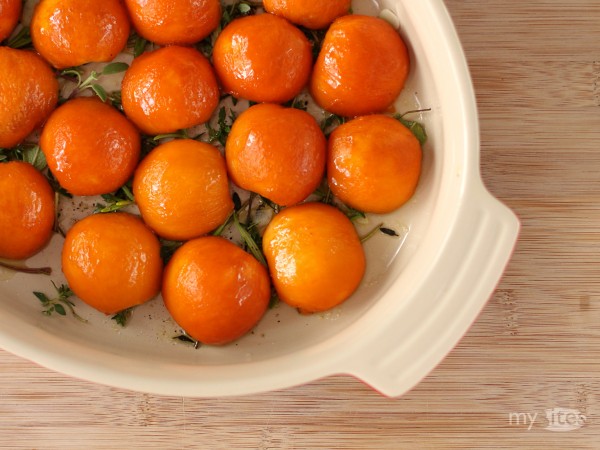If you plan to make a terrine say for 4 guests, you’ll always have to deal with leftovers due to form sizes and minimum amounts from which upwards terrines make sense. For example from this tomato terrine you can cut 14 to 16 slices, much more than you need for the twisted caprese. Leftovers, or generally food should never be wasted, so here’s another idea for an appetizer with the tomato terrine.
Author Archives: Robert
Twisted Caprese
August and the first weeks of September are the best time for incredibly flavorful local tomatoes. During the season you can find a wide selection of sizes, colors and shapes at the local market, which irresistibly invite you to explore the wide variety. Tomatoes are very versatile: you can broil, roast, grill, stew, fry, dry or simply use them raw e.g. in a salad. One of the most famous and popular salads with tomatoes is probably the Italian Caprese consisting of fresh tomatoes, mozzarella (from buffalo milk), basil, some olive oil and balsamic vinegar. In my version here I integrated the idea of a tomato terrine inspired by a recipe of Tanja Grandits. In her cookbook she called it tomato cassata and used some vanilla too, which I skipped. Instead of red tomato juice I pureed and sieved yellow tomatoes, which added a nice and vibrant color to the final dish.
Pork Fillet with Elderberry Sauce and Peach Polenta
Erlangen, the city I live in, is quite unique due to its huge grassland right in the middle of the city. During spring and summer a herd of sheeps is grazing, some parcels are used for wheat or corn production and of course the wonderful grass is regularly collected as animal food for the winter. Every morning on my way to work I ride my bike through this peaceful nature. Right at the outskirts I pass a small lake with giant elderberry bushes. In spring they are almost completely white and full of elderflowers. Now, at the end of summer the bushes turn black from the bending branches of tons of ripe elderberries. Unfortunately most of them are pretty high up and unreachable even with a ladder – but I managed to collect some for a fresh and simple elderberry sauce.
Steak Tartare with Bell Pepper Coulis, Mustard Tomato and Dill Oil
Steak tartare appears quite often on menus in Hungarian restaurants. Usually the beef loin is matured covered in oil and some spices and herbs. This is a necessary step – unfortunately meat is not allowed to be aged long enough because of regulations of the health department. The beef is then minced using a grinder to order and usually served already mixed with spices, onions, garlic, an egg yolk and toast. This is the classic version you get in Hungary, but nowadays more elaborate tartares start to show up. Recently, I had a steak tartare at the Winekitchen, where the beef was finely chopped to order (by hand!) and served with fresh warm bread and mayonnaise made of pumpkin seed oil. It inspired me to create my own summer version of steak tartare.
Pork Fillet with Lentils, Grilled Spring Onions and Apricot-Bell-Pepper Terrine
Terrines are great if you plan something special for your guests but don’t want to spend the whole evening in the kitchen. They can be prepared one or two days before and when the guests arrive, the only thing you need to do is to cut off some slices and finish the other components of your dish. Another great advantage is that they are very versatile. So if there are some leftovers from last nights dinner, you can still use them in combination with other ingredients. Usually terrines are used only as main elements in cold appetizers. This recipe is a nice example for using terrines as accompaniments in warm dishes served as a main course.
Apricot and Bell Pepper Terrine with Ceps and Dill-Vinaigrette
Apricots belong to a special group of fruits. While most fruits loose more or less flavor when cooked, for apricots actually some gentle heat really enhances and helps to develop their flavor. Therefore it is always wise to bake or cook apricots before any further use. Or – if there is no time – just simply toss with some brandy or schnaps and flambe. For baked apricots you can either leave the skin on (and remove easily after baking) to get a more vibrant sour and tart note. Otherwise briefly blanch the apricots in hot water and peel them. For this current recipe I removed the skin because I didn’t want to have too much tartness in the end result. I baked the apricots at low temperature on a herb bed which enriched its flavor and took it in a savory direction. The original idea for the herb baked apricots itself is based on a recipe from German 3-star chef Juan Amador‘s cookbook. I’ve already prepared it several times and always tweak on the combination of herbs and the preparation. E.g. removing the skin before baking is clearly a better choice. The apricots pair really well with liver or mushrooms. In this recipe I incorporated them in a terrine, which can be used in multiple ways.
